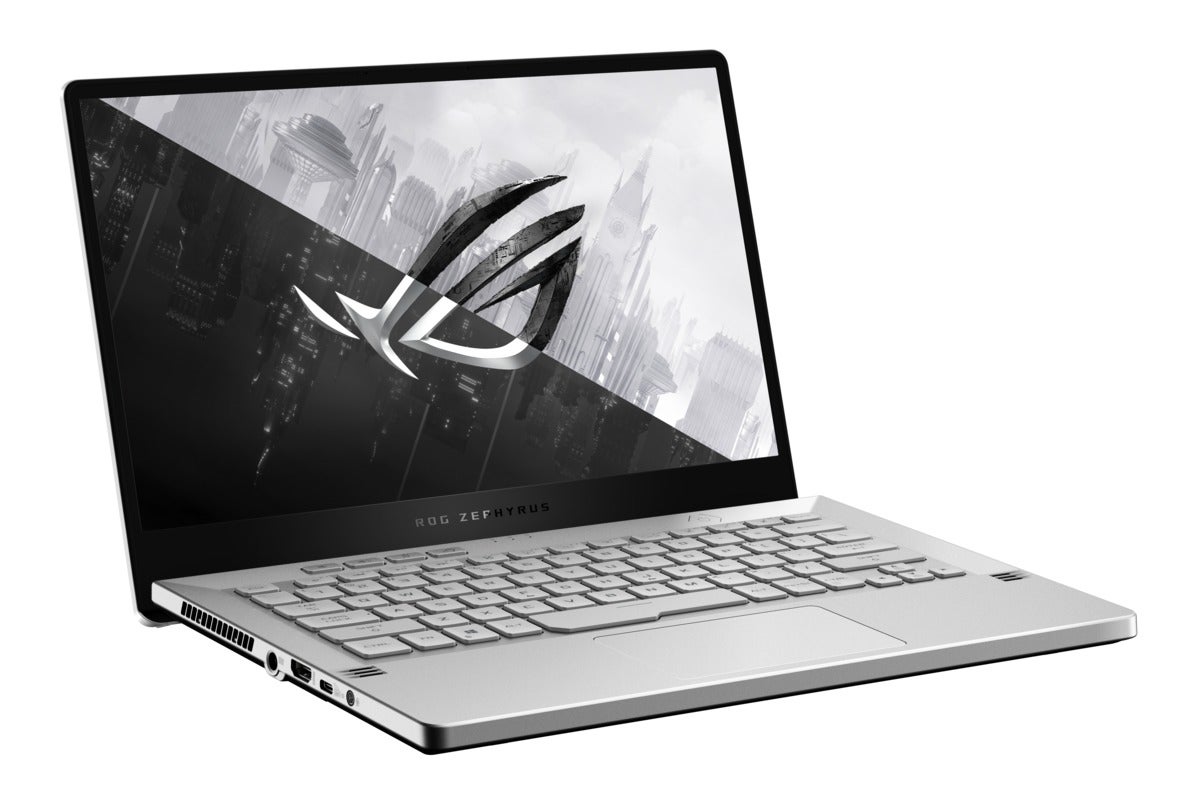4 reasons why you probably shouldn’t buy a gaming laptop right now
PC enthusiasts looking for the next best thing may want to think twice before jumping on gaming laptop deals right now. With new hardware from AMD, Intel, and Nvidia coming around the corner, we’re likely to witness a major performance bump.
To help you decide, we’ll run through the four reasons you may not want to buy a new laptop. All are significant reasons, but the first one is a doozy.
1. Nvidia 30-series Ampere GPUs
If you buy a laptop to play games, the most important component is always going to be the GPU. While Nvidia remains tight-lipped, a report from WCCFtech.com’s Usman Pirzada indicates that the mobile version of the company’s “staggeringly powerful” RTX 30-series GPUs could appear as soon as January.
The WCCFTech story said Nvidia’s Ampere-based GeForce RTX 3060, RTX 3070, and RTX 3080 will supplant today’s Turing-based 20-series of GPUs in gaming laptops. The Turing-based GeForce GTX 1650 and GTX 1650 Ti will stick around at lower prices.
It’s really the 30’s that matter. Given that the GeForce RTX 3070 on desktop is somewhat equal to a GeForce RTX 2080 Ti, the mobile version should also provide a huge performance boost for gamers. And yes, the RTX 3080 will take yet another step beyond that.
As the GPU is the lifeblood of gaming, it’s worth it to wait a month to see if Pirzada’s story comes true. And yes, if he’s wrong, and you passed on a deal, you can shake your fist like Admiral Kirk as you scream into the heart of a dead planet: “USMAAAN!”
2. AMD Big Navi Mobile?
While there aren’t any rumors of a mobile version of AMD’s “glorious” Big Navi Radeon RX 6000 series for laptops, AMD has all but hinted that the Big Navi should yield good returns with its SmartShift technology, which intelligently shares power with the CPU. AMD also heavily pushed power efficiency as an advantage over Nvidia’s 30-series. So we do expect a Radeon RX 6000 in laptops, but we don’t know exactly when.
 Asus
AsusAsus’ ROG Zephyrus G14 was one of the most impressive laptops this year, with its Ryzen 4000 and GeForce RTX 2060 in a 3.5-pound package.
3. AMD Ryzen 5000 mobile CPU
Moving into CPUs, we can say it’s definitely worth waiting to see whether AMD CEO Lisa Su announces AMD’s upcoming Ryzen 5000 mobile chips at her CES keynote in January. We called the desktop version using the Zen 3 core the “best computer CPU we’ve ever seen.” Offering better efficiency per clock than Intel’s 14nm chips, Zen 3 offers stupidly good multi-core performance and strong single-core performance, too. The mobile version isn’t likely to pack the 12 or 16 cores of the desktop, but the increase in single-core performance should greatly help Ryzen 4000’s soft spot.
Even better, Ryzen 5000 laptops will apparently finally be available with high-end GeForce GPUs, which were impossible to find this year. Most laptop vendors just never planned for how well Ryzen 4000 would do, but most likely they’ve shifted their plans for Ryzen 5000.
4. Intel Tiger Lake H mobile CPU
If you have a cynical view of the world, you might say the only thing Intel changed in its “H”-class high performance chips from 8th-gen to 9th-gen and 10th-gen was the number. While they have small differences, they’re all built on the same 14nm process that Intel has been nursing along for years. The old process means the chips make too much heat and consume too much power to compete.
All that may finally change when Intel releases its 11th-gen Tiger Lake H chips. The CPUs will be built on the company’s latest 10nm manufacturing process, which demonstrated impressive results on the lower-power version in thin-and-light laptops when we previewed it.
With a higher-wattage power budget, we expect the Tiger Lake H versions to outrun Ryzen 4000 CPUs. What we don’t know is how it’ll do against Ryzen 5000, but after years of 14nm H-class CPUs, we really think Tiger Lake H will knock our socks off.
 Gordon Mah Ung
Gordon Mah UngImagine MSI’s thin GS66 with a 10nm Tiger Lake H instead of its blisteringly hot 14nm Comet Lake H.
Next-gen gaming laptops will leap forward
Add up all these next-gen parts, and we expect the result will be far more of a performance boost in 2021’s gaming laptops than we’re used to seeing. Anyone who is chasing performance should definitely wait.
The catch is whether you’ll even be able to buy one of these amazing new laptops when they ship. Given the difficulty we’re already seeing in buying Ryzen 5000 desktop CPUs, and GeForce 30-series and Radeon RX 6000 GPUs, all bets are off on actual availability, especially if scalpers have their way.
So yes, while we’d definitely recommend that performance fiends wait for next-gen gaming laptops, everyone else should still consider any stupidly good deal they find on a high-end gaming laptop now. Are you really ready to wait until the summer to get your dream laptop?
The other consideration is budget. All of these awesome-sauce parts will mostly go into higher-end laptops. If your funds are limited, you could snag a great deal on a current laptop precisely because vendors are clearing out inventory before the next generation hits.
